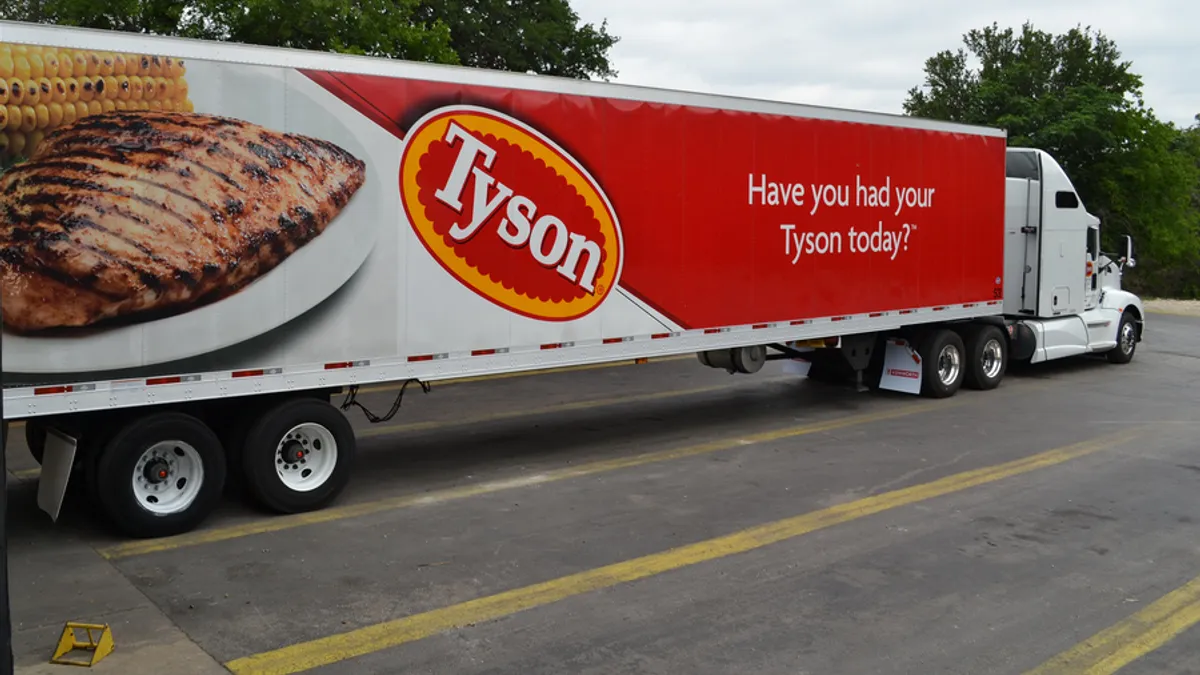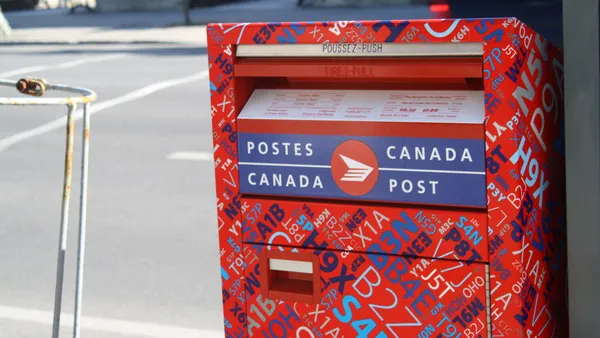Dive Brief:
- Tyson has started using DNA to trace beef from the ranch of origin to the restaurant or retailer where it is sold. This ability is currently only available for its Open Prairie brand beef, Kent Harrison, the vice president of marketing and premium programs at Tyson Fresh Meats, told Supply Chain Dive. It is using a process developed by IdentiGEN.
- A DNA sample is taken via a special collector from the carcass at the harvest facility. This sample has a barcode on it that can be scanned, allowing the DNA information to be connected to the carcass ID and the live animal ID. This information is then entered into a database.
- “Then at any point in the future once it's processed — it's cut into steaks, it's ground into ground beef, whatever the case may be … a sample can be taken of the finished product and then tied back through this DNA traceability to the animal that it originated from," Greg Peters, the director of technical accounts at IdentiGEN, told Supply Chain Dive.
Dive Insight:
This project is being driven by customer demand for more visibility into food supply chains, Harrison said.
All of the cattle in this first implementation of the DNA traceability technology also fall into the category of "No Antibiotics Ever." This gives the customers the ability to get the extra level of assurance that their product really does meet these requirements, Harrison said.
The number of suppliers providing cattle for the Open Prairie beef changes depending on the week, but tends to range between 60 to 70 ranches. And none of these suppliers had to make changes to their operation for Tyson to implement this new program. All of the DNA collection is done by Tyson, Harrison said.
Tyson can use this technology to constantly check on and verify the source of its Open Prairie beef. But customers like restaurants and retailers selling this specific subset of Tyson beef can also request to have their product tested by sending a sample to the IdentiGEN lab in Kansas.
"Once the sample is received would take 5 days to analyze the sample and correlate it with the DNA database, and then 2 days to trace that carcass back through the Tyson record keeping system to the ranch where the animal was born," Gary Mickelson, a Tyson spokesperson explained in an email.
But Harrison envisions expanding this to more meat products and even potentially giving the final consumer this information via packaging.
Food producers and retailers are currently looking for ways to trace their products through their supply chains. Several are turning to blockchain technology — this has been the solution for Walmart, Bumble Bee Foods and others. But blockchain technology requires some kind of external packaging that can be scanned. Using DNA doesn't have this requirement, Peters said.
"We can use the product itself to know where it came from," he said.
Tyson is currently in its second week of collecting DNA samples and has already begun spreading the word to customers through its field sales staff.
"Right now this is our first step in implementing the traceability program through the supply chain to make sure we can do it on an as-requested basis and then I think eventually you’ll see it on packaging," Harrison said.














